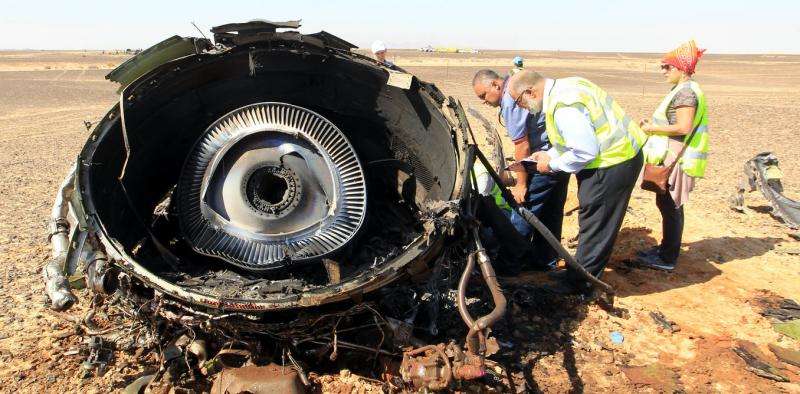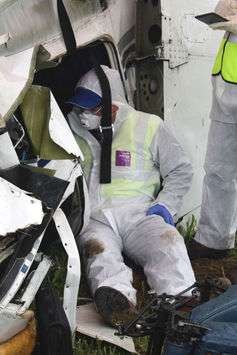How air accident investigators turn disaster into a way of saving lives

Throughout aviation's comparatively brief history, properly investigating the causes of accidents has been essential to improving flight safety, to the point that aviation is one of the safest ways to travel. Looking at the pictures of debris scattered across many square miles of Egyptian desert, or Ukrainian sunflower fields, or floating at sea, the fact we're able to draw useful lessons from such destruction is testament to the efforts of air accident investigators worldwide. How do they do it?
Aviation rules and practices are governed by the International Civil Aviation Organisation (ICAO, a UN agency) and through a document known as Annex 13 to the Convention on International Civil Aviation, under which all signatory nations are obliged to investigate accidents occurring within their borders. Like a coroner's court inquest, the focus is on learning lessons rather than building a case against a perceived guilty party.
When notified of an accident, the national investigation agency deploys a team to the site – in the UK this is the Air Accidents Investigation Branch (AAIB) of the Department for Transport. Generally the team includes three investigators: one with a pilot background, one with an engineering background, and another specialising in flight data recorders.
At the scene of the accident the investigators' first vital task is to assess which evidence may be perishable. What could be lost? This could be snow and ice, or witness recollections. Other evidence that can be altered through accident or design must also be prioritised and recorded – for example the position of control switches or wreckage, and documentation.
This is quite a task in itself, and investigators usually start with a rational overall assessment of the accident site. Sometimes there may be more than one area of interest – for example where the aircraft breaks up in flight as happened in the recent crash in Egypt or MH17, and where debris is scattered over many square miles. In other cases, evidence may lie at the departure airport or at the aircraft's home maintenance hangar. Experienced investigators will say that they let the accident site tell the story, taking in the full picture rather than immediately focusing on the forensic detail.
Letting the evidence speak for itself
The investigator's approach is critical. They need to be led by the evidence at all times, and mindful that things are rarely as they first appear. This is one (of many) reasons why those in the investigation business will often shake their fists at so-called experts whose speculation and hunches fill initial news reports after a crash. A good investigator sets out to test hypotheses with the evidence, rather than collect evidence to support a theory.
This is also the reason why, sometimes, investigations can take many years to complete. The ICAO suggests one year as a target, but many take longer – the complex investigation into Swissair Flight 111 which crashed over Nova Scotia took five years to complete, for example.
The physical evidence that remains is of great importance and is generally subjected to various types of imaging in situ, such as photography, laser scanning (LiDAR), and airborne or satellite imaging. This is especially important if the accident site is remote or scattered, as the pattern of the wreckage and how it is distributed is as important as the debris itself. Minor details such as dents and paint scrapes all provide the investigators with details to help decipher the flight's last moments.

Black boxes
In addition to physical evidence is the in-flight record of the aircraft's systems – the "black box" comprised of the Digital Flight Data Recorder (DFDR) and Cockpit Voice Recorder (CVR). These amazing devices record the last two hours of sound on the flight deck and many hours of essential flight data such as control inputs, heading, speed, altitude, and the status of systems such as engines and cabin air supply.
However, they are only as good as the data that feeds them and those who interpret them. If the data going in is garbage then the recorder will not help. It's also important to realise that they only record what happened, but not why – this is especially important when trying to understand the human element of accidents, for example the Germanwings crash in the Alps.
Technological testing
Investigation teams can grow very large, with investigation teams from the country in which the aircraft was manufactured, or operated, or designed all having a right to participate. Technical advisers are brought on board for their specialist knowledge or facilities: engine or airframe manufacturers, research laboratories (such as QinetiQ), or universities.
For example, Rolls-Royce use X-ray tomography to examine damaged engines, looking for signs of metal fatigue or contamination before they are stripped down to avoid losing precious evidence during dis-assembly. Simulations often play a role: Cranfield Impact Centre was asked to examine the Boeing 777 crash at Heathrow in 2008 on behalf of the AAIB using computer and physical simulations. This was done under close supervision of the investigators in order to maintain the investigation's independence.
Often the best way is to physically piece together the wreckage. In doing so, it's possible to see how the structure broke apart, or to check for residues of explosives or tell-tale impact marks. This task is much easier when reconstructed in three dimensions rather than looking at individual pieces of metal laid out on a hangar floor. The clues gleaned from this process can be corroborated against those from elsewhere, such as post-mortem results of the occupants, closer forensic examination of the wreckage, or flight recorder or radar data.
Pulling it all together
Usually the team has been assembled at zero notice from organisations selected purely by the circumstances of the accident. There is huge pressure on the team – from society and the commercial airline operators and manufacturers who need to know the safety implications as soon as possible. The ability of the investigator in charge to manage the process, by avoiding media leaks and keeping all involved on-side for example, is key.
It's rare an investigation pivots on a single, Hollywood-style eureka moment. Instead it comes from the un-glamorous, methodical and painstaking work of sifting through a jigsaw of evidence, some of which will be wrong or contradictory. Witness statements, for example, are frequently not entirely accurate. The challenge for the investigators is to carefully analyse how the pieces fit together, and whether it's possible to collect further evidence or conduct tests that fill in the gaps to prove or disprove a theory.
Only with thorough analysis can the team piece together the sequence of events, understand why they occurred, and what changes should be recommended as a consequence. Sometimes accidents occur because of management decisions made many years before, or even less tangible factors like safety culture among flight or maintenance crew - these are difficult problems to pinpoint.
Perhaps the least exciting aspect of the investigation is the most important – that of writing up the final report. It must be written with care, without allocating blame and knowing that it will be read by both relatives and regulators. If a poorly worded recommendation is rejected then all their hard work may be in vain, so each statement must be thoroughly supported. But good regulators know well to act on sound recommendations, and it's largely because this system works so well that aviation is as safe as it is today.
Source: The Conversation
This story is published courtesy of The Conversation (under Creative Commons-Attribution/No derivatives).
![]()




















